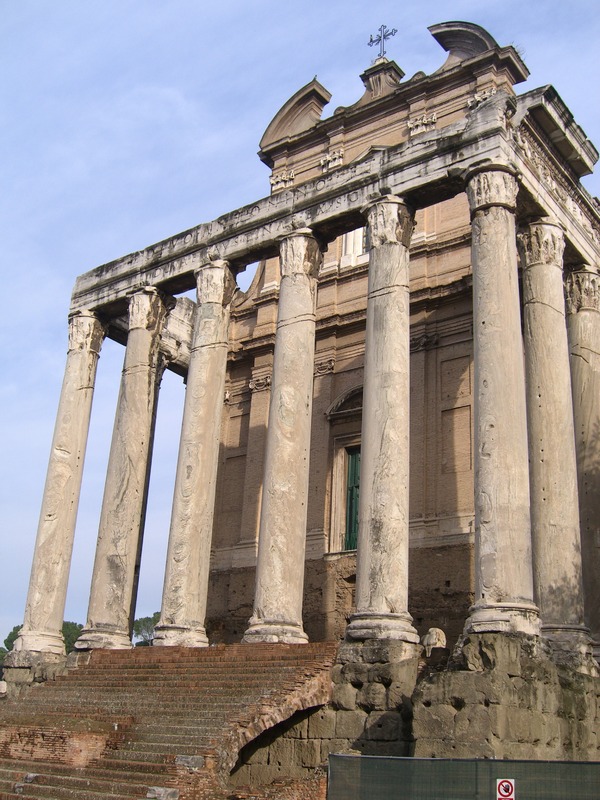Sixteenth-Century Destruction and Despoliation

Front Side of the Temple of Antoninus and Faustina, 141 A.D., (Shown without Original Marble Steps and Ancient Statuary).
In 1527, Rome was again pillaged, this time by the armies of Charles V of Spain. During this time, the chapels of the church fell into disrepair, and in 1536, Pope Paul III authorized the destruction of the chapels, as well as approximately 200 peasant houses within the Forum, in order to create a clearing for a processional avenue from the Arch of Titus to the Arch of Septimius Severus. Later on in the sixteenth-century, a building boom occurred in Rome that resulted in the mining of stone from ancient monuments. Though the Temple of Antoninus and Faustina escaped a large amount of this destruction, its marble steps were removed for use in the construction of St. Peter’s Basilica. The statues, friezes, and reliefs that once decorated the temple and other buildings in the Forum were discarded for Rome’s lime kilns. [1]
__________________________________________________________________________________________________________________
1. Eric Fulford, “A Temple Through Time,” Archaeology 47 (1994): 59.